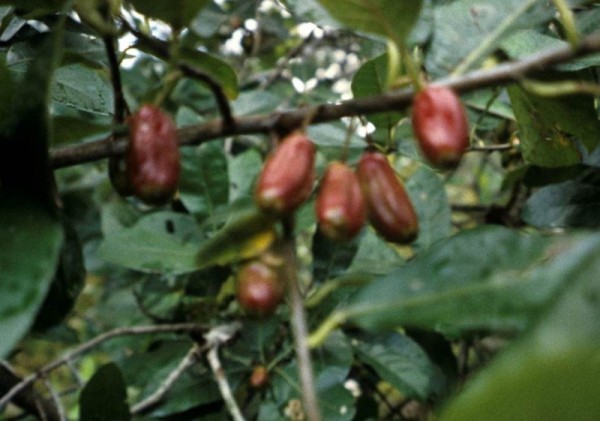I walked out the other day to observe the fruit on the tupelo trees about town; that is the female tupelo trees for the Nyssa genera is composed entirely of dioecious plants in which the male and female flowers (in accordance with Mr. Linnaeus’s plan) are carried on separate individuals and, as in the animal world, it is only the females that produce the fruit.The most common Nyssa in Virginia is the Black Tupelo, Nyssa sylvatica, whose wood is used to form the bee gums of the apiarist. It produces a rather smallish fruit but they are sought out by many species of migratory birds and it makes one wonder if the brilliant red fall foliage is meant to attract these avian voyagers to the feast.
The Water Tupelo, Nyssa aquatic, carries a much larger fruit. Its range includes southern Virginia but is more commonly found in swamps farther to the south and is recognizable by the buttressing of the lower trunk in wet situations. It has long been known as a bee tree for these industrious insects are particularly fond of the flowers. I found a pair growing on the margins of a small pond at the Providence Hall House on the edge and the female tree was fairly covered in hanging clusters of dark blue fruit.
The rarest of the tribe is the Ogeechee Tupelo, Nyssa ogeche, found in a narrow band from the Gulf of Mexico to the Atlantic coast of southern South Carolina.
It was first discovered by William Bartram along the Ogeechee River in Georgia from whence it takes its name and we are fortunate enough to have a pair planted in a low pasture just below the garden.
It, like the water tupelo, is a favorite bee tree and it is from the nectar of this tree that the famous tupelo honey is made.
Also known as the Ogeechee Lime for the fruit can be brewed to form a type of sun tea that is flavored much like lemonade.



Leave a Reply